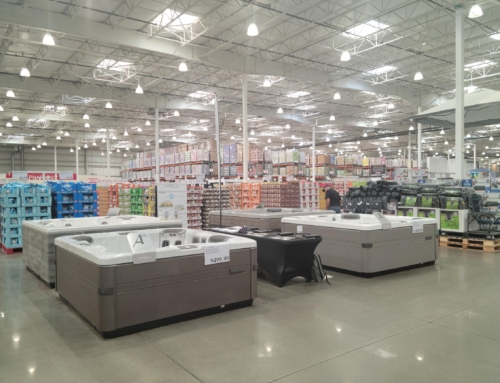Like a billboard on Main Street, your online marketing needs to capture the eyes of consumers among a sea of retailers vying for the same attention. In the age of web analytics and online retail, simply launching a website and social media profile is not nearly enough to draw the amount of traffic needed to build your spa business. To increase your online visibility, use this checklist to optimize your web presence.
1. Website Essentials
If you haven’t launched a website or digital showroom for your business, you are missing out on thousands of potential sales. However, even if you already have a website, you may not be getting enough traffic. Your site should be presentable, informative, and user-friendly. Additionally, it should track user engagement, providing analytics from you which you can identify a target consumer base. Most importantly, it must easy to find and remember. Effective website share the following attributes:
- Clearly identifiable objectives (visitor knows where to go and what to do)
- A simple, memorable domain name
- Mobile viewing optimization or secondary mobile site
- Current and regularly updated product and service information
- Built-in analytics (click traffic, visitor engagement, page visits, etc.)
- Consistent and engaging branding (logos, page themes, design, etc.)
2. Web User Experience
No matter how many hits per day it receives, if your website is difficult to navigate, users are not going to engage. Your web user experience needs to be universal and intuitive, allowing first-time visitors to easily find the information they’re looking for. Provide clear contact information and a convenient way to reach your business, such as a contact form, live chat or email address. Furthermore, you need to establish what differentiates your business from other spa retailers, incorporating value propositions prominently onto your landing page, the first page users interact with.
Here are the features that enhance the user experience of your website:
- Fast load speed (avoid excessive graphics, videos, and animations that slow down your site)
- Identifiable pathways to the essential content pages
- Trust seals and secure connections (i.e., HTTPs)
- Call to action (content to conversion)
- Contact information on every page (email, phone number, contact form link, etc.)
- Customer testimonials and user reviews
3. Contact Information
Ultimately, the goal of your website is to draw traffic to your brick-and-mortar showroom. As such, your customers need to know how to reach you. Your contact information needs to be prominent throughout every page and should include helpful features, such as location tracking and social media integration. Additionally, provide a way to communicate directly with a representative from your store. For example, establish a contact form that allows customers to email your sales team and request a quote. These are the must-haves for all contact pages:
- Integrated map of your locations (Google Maps, Bing, etc.)
- Email address or contact form
- Phone number and address
- Call to action (“Call us today,” “Visit our showroom,” etc.)
4. SEO and Online Visibility
Once your website is up and running, all you need is traffic. Today, most online consumers use search engines like Google to find the products or services they’re looking for rather than searching for businesses directly. As a result, you need to integrate keywords that draw clicks to your site and improve your search engine optimization (SEO).
Digital Marketing Director James Straatman at Big Leap Online Marketing agrees. “SEO and content marketing are an absolute must when it comes to marketing your small business online to capture new customers and grow sales.”
Incorporating industry-specific keywords throughout your site, you can make your page more prominent on search engines (higher up in the results), resulting in more traffic. Your content should include product, service, and location keyword phrases, such as “spa covers in Dallas” that consumers are likely to search for. To draw more traffic to your site and incorporate SEO content, you should:
- Identify and incorporate your keyword phrases throughout
- Avoid duplication of pages, content, and URLs
- Optimize images and location
- Manage metrics using Google Webmaster Tools
- Create off-site content and links
- Provide unique, engaging, and informative content
Straatman adds, “When your potential customers are searching for hot tub providers online, you need to be there. This is done by optimizing your website with quality, topic-focused content, including the right keywords, and building authority through acquiring relevant links pointing back to your website and content.”
5. Content Building
To keep web traffic steady, your site needs not only to be accessible, but up-to-date as well. While some content may stay consistent for years, it’s important to add new content regularly. Fresh content, such as blog posts, seasonal sales, and new product listings encourages visitors to return to your site. It also demonstrates that your business is actively engaged in marketing. Outdated information and bad links are like letting cobwebs accumulate in your showroom window. Simply put, customers will take their business elsewhere. To keep your web presence active, be sure to:
- Publicize and promote new sales and special events
- Publish new content regularly (blog posts, press releases, testimonials, etc.)
- Offer useful information, quips, and factoids (spa maintenance tips, weatherizing, etc.)
6. Pay Per Click
Like any marketing effort, you need to invest to yield conversions. Pay-per-click (PPC) is an affordable, interaction-based marketing option to boost link traffic and website visits. Unlike similar marketing models such as cost per impression (CPM), you only pay when your link is clicked. PPC platforms prioritize your website in search engine results, boosting your link into the top results and collecting revenue for each visit. To get the most out of your PPC marketing, be sure to optimize your landing pages with keyword phrases, ad text, and original content. Popular PPC providers include:
- Google AdWords
- Bing adCenter
7. Social Media Presence
To complement your website, you should integrate a complete social media brand on all the popular platforms, including Facebook, Twitter, YouTube, and more. Use your social media profiles to generate user engagement with interesting and unique content, including images, videos, and links. Active social media use encourages increased visibility. However, it is possible to post too much. It’s important to strike a balance between regular, targeted content, and spam.
Photos and videos often capture more views than text alone, but the algorithm for each post varies. In every profile you create, be sure include your contact information and links to your homepage. Here are some of the most popular social media sites for spa retailers:
- Google+
- Houzz
Facebook tends to be the more common platform for spa retailers given the user demographic. If Facebook is your go-to, Ben Soutas, Digital Marketing Specialist with Bullfrog Spas, gives this tip: “With organic reach on Facebook at an all-time low, it’s more important than ever to post high quality, engaging content. Facebook’s new algorithm is prioritizing posts that receive comments and stimulate discussion among users. The easiest way to encourage comments and participation from your Facebook fans is to ask open-ended questions in your posts.”
8. Press Releases and Media Coverage
Good press goes a long way toward strengthening your store’s reputation. To build your brand and establish a rapport with your local community, incorporate news releases, and local media coverage into your website. Additionally, be sure to include any charity, sponsorship, or licensing affiliations throughout your site. Finally, provide press contact info for media outlets that wish to cover your business. To optimize PR content, add the following to your site:
- Charity affiliations and event sponsorships
- Local trade group associations and Chamber of Commerce recognitions
- Press releases for events
- Local media contact information
9. Email Marketing
Whenever you engage with new customers, you should always get their contact information, especially their email. Email marketing allows you to reach a wide base of new and returning customers at once, alerting them to new products, sales, and other incentives. To build your mailing list, establish customer account system on your website. You can use email marketing to:
- Share product coupons and rebates
- Announce sales events
- Promote on-going incentives
- Publish monthly or quarterly newsletters
Soutas stresses the nurture over sales approach with you email marketing. “A successful email marketing strategy will nurture your sales leads by providing them useful and timely information. Send helpful emails that will educate and inform your leads. We see a 79% increase in open rates and 174% increase in click-through rates when sending nurture emails as compared to promotional sales emails.”
Though the list seems daunting at first, with practice and consistency, online marketing is a sustainable and effective customer conversion strategy. Through increased visibility, engaging content, and accessibility, your website can garner more traffic, ultimately leading to more customers.









Leave A Comment